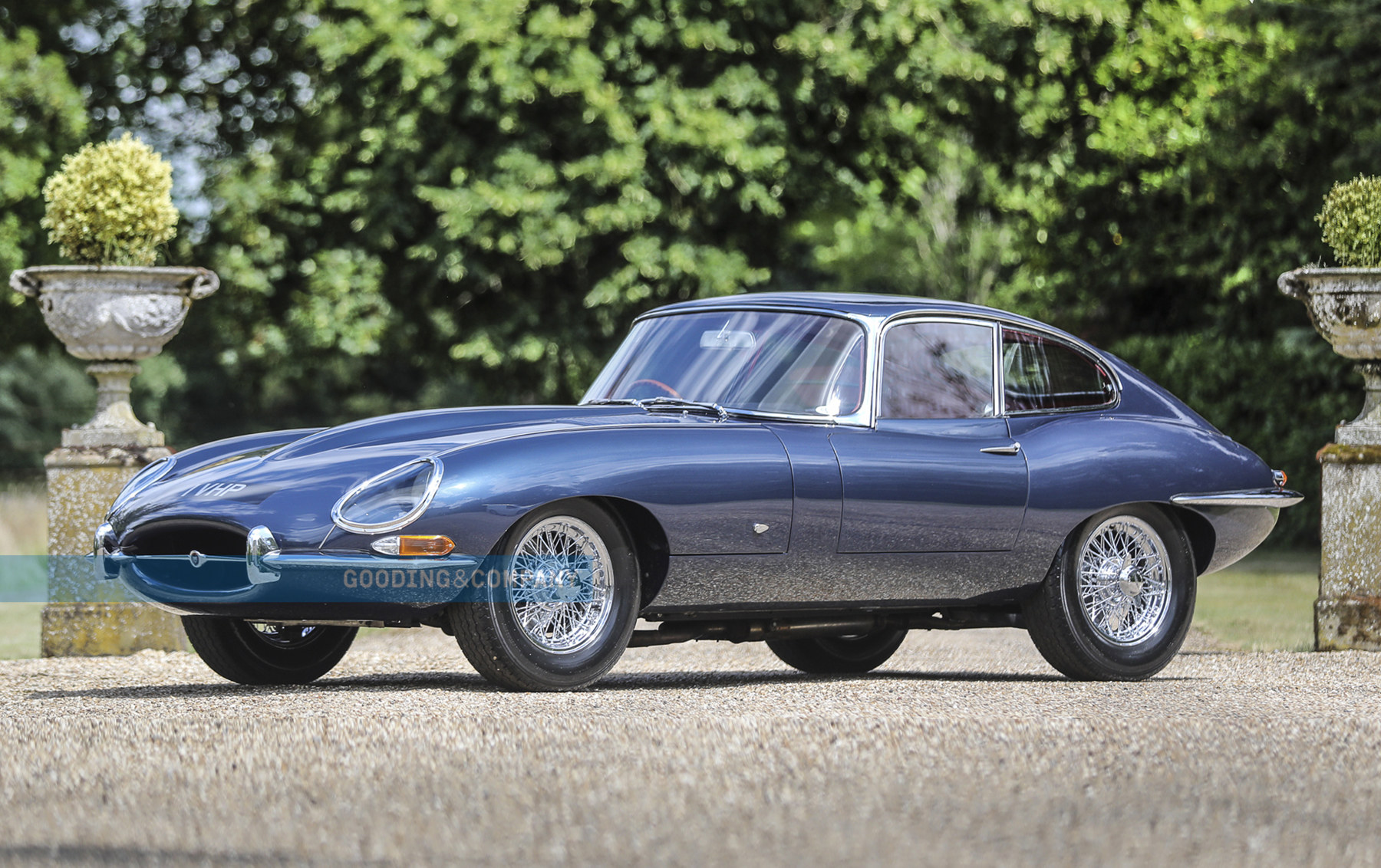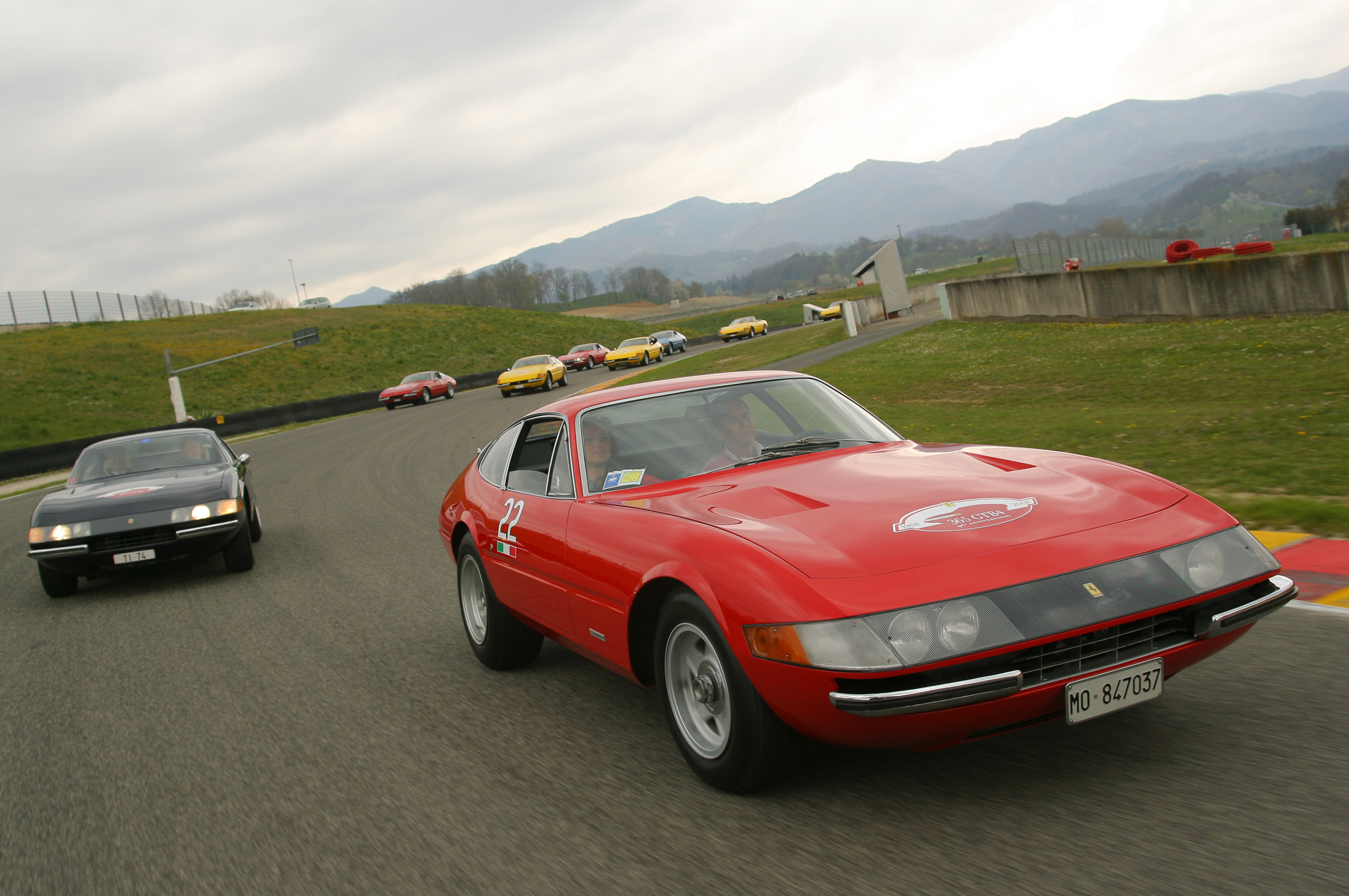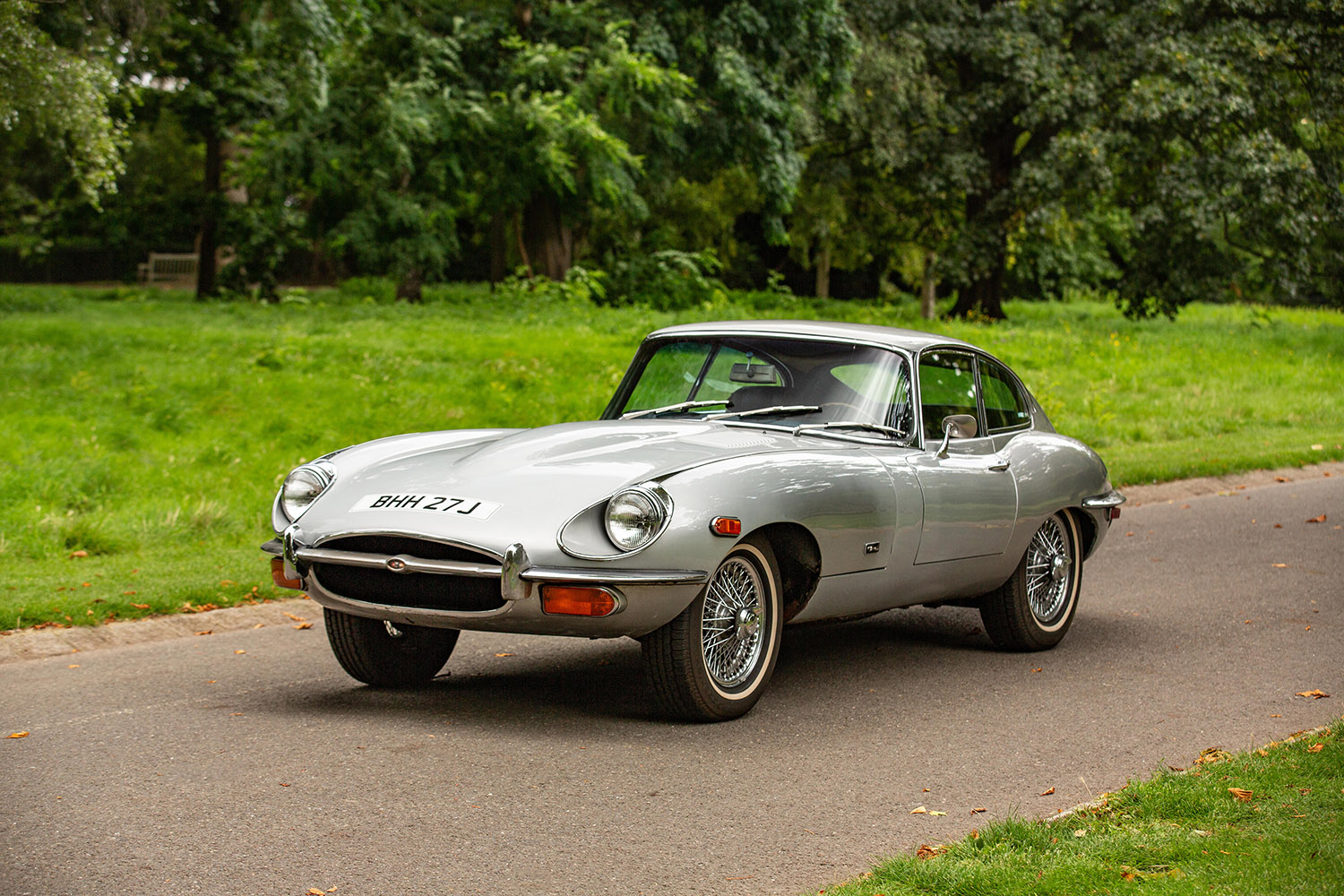BUYER’S GUIDE
Jaguar E-type (Series II) review
With the Series 1 grabbing the glory could the Series 2 be a more accessible way of living the E-type dream..?
Engine
4.2-litre six-cylinder, petrol
Power
265PS (195kW) @ 5,400rpm
Torque
384Nm (283 lb ft) @ 4,000rpm
Kerb weight
c. 1,265kg (dry)
0-62mph
c. 7.3 sec (varies according rear axle ratio)
What Is It?
The original Series 1 Jaguar E-type stunned the automotive world when it arrived in 1961, and rightly became one of the decade’s defining sportscars. An updated 4.2-litre engine, easier all-synchro gearbox and introduction of the more spacious 2+2 all helped improve its offering as the years went on but, by 1968, looming changes to safety rules in the vital US export market meant Jaguar needed to invest in some more significant updates.
Previewed by the so-called Series 1½ changes in 1967, the full Series 2 went on sale in 1968 with various new features like full, wraparound bumpers, revised headlights stripped of their signature aerodynamic fairings and larger, repositioned rear lights.
Good news? While purists will always prefer the Series 1, and pay a premium for them, it’s still essentially the same car underneath and drives just as nicely, meaning a Series 2 could potentially make E-type ownership feel just that bit more attainable.
Corrosive Areas
Bonnet seams
Front bulkhead, sills and floorpan
Rear arches
Checklist
- The most obvious Series 2 modifications include the repositioned headlights and removal of the clear fairings that covered them on earlier cars, and replacement of interior toggle switches with more conventional rockers; these were introduced on late Series 1 cars, meaning these are commonly referred to as Series 1½ models
- Full Series 2 cars arrived in 1968 with further modifications, including a much larger ‘mouth’ on the bonnet to accommodate optional air conditioning, bigger sidelight/indicator units now mounted under the new full-width bumper and a similar arrangement at the rear with larger tail lights
- Series 2 also added the option of steel wheels, power steering and air conditioning to boost appeal in the US market, where the car was sold as the XK-E
- American-spec XK-Es also had a less powerful, emissions-compliant engine, with two Stromberg carburettors in place of the regular triple-SU set-up
- The XK engine is well-proven and long-lasting with correct maintenance; check for the usual signs of head gasket failure like emulsified oil on the inside of the filler cap or contaminated coolant, rattling timing chains and persistent smoke or hesitancy once warmed through
- Consistent oil pressure is a good sign, a rising temperature or fan not starting once warm a bad one
- Worn diaphragms in the triple SU carburettors can result in lumpiness and requires expert help; retrofitted fuel injection can improve driveability
- Check for smooth clutch engagement and bite – replacement is a big job requiring engine removal so can be costly
- Inboard rear brakes can get contaminated by oil from the differential – servicing them is a big job so make sure the car pulls up cleanly
- Structural corrosion is an ever-present concern, especially in floorpans, sills, rear arches and engine cradles – most cars will have had some degree of restoration by now but make sure this has been done properly and documented by a known specialist
- Jaguar supports the E-type with parts (up to and including replacement engine blocks) and archive information like verification of the original build date, colour and options
How does it drive?
As the E-type matured so did its buyers, and the rawness and uncompromising sportiness of the early cars was steadily refined into a more luxurious package with more creature comforts. Thanks to its technological head start the E-type was still competitive by the time the Series 2 arrived, given the monocoque construction, all-independent suspension, disc brakes and sharp rack and pinion steering. That makes it a very driveable car on present-day roads, the trademark Jaguar ride quality combined with sharp steering and all scored by the glorious six-cylinder bark of the XK engine.
True, the Series 2 piled on a few pounds but the 4.2-litre version is more muscular and flexible than the 3.8 of early Series 1s and performance is plenty strong and charismatic enough. American market cars – sold as XK-Es – are down on power thanks to the emissions-compliant twin-carb arrangement while power steering (where fitted) on these cars may dull the experience a bit. But restoring power and driveability will be well within the scope of the many specialists who know the E-type inside out.
What’s good?
While the familiar Open Two-Seater and Fixed Head Coupe formats carried over with the Series 2 modifications, the 2+2 received some more significant change. The windscreen took on a sleeker rake to make it look less awkward than the original. It may be the least fashionable E-type configuration but if the extra practicality of a 2+2 appeals then a Series 2 is therefore a more appealing option, all things relative.
The purists may mutter into their beards about the ‘uglier’ bumpers and addition of emasculating options like power steering and air conditioning to make the E-type more appealing to American buyers but, as a car to enjoy rather than stash away as an investment, the Series 2’s more civilised features could make it easier to enjoy on a summer’s day.
More macho E-type fans may consider mastery of the earlier cars’ ‘Moss’ gearbox a badge of honour but, in truth, if you’re out for a Sunday cruise the slightly more easy-going nature of a Series 2 is probably going to be nicer. And the fact it’s less collectable means you can enjoy it without stressing too much about a few miles on the clock denting its ongoing value.
What’s bad?
As a relatively overlooked chapter of the E-type story, Series 2 cars may have had less attention lavished on them over the years, the relative lack of value meaning greater risk they’ve survived on make do and mend rather than full restorations. This could be bad news because the same issues of expensive bodywork repairs can lurk within, and they’ll cost just as much to fix as they would on a more valuable Series 1 but without return on investment.
As with any classic car purchase it’s about making a call on whether apparent savings on a cheaper purchase price stack up in the long-run when you factor in restoration or upkeep, the general rule being this rarely works out in your favour.
It’s also worth considering a significant proportion of Series 2 production went overseas, and while US XK-Es from ‘dry’ states may appeal in terms of relative lack of corrosion they will obviously be left-hand drive and likely running significantly less powerful twin-carb engines.
Which model to choose?
Spared the hype of Series 1 snobbery and the endless debates about the relative values of flat-floor cars, synchro gearboxes versus Moss transmissions and the decision between revvy 3.8 or torquey 4.2 the choices for Series 2 cars are a lot simpler, and basically come down to which bodystyle you want.
As already mentioned, the 2+2 looks a bit sleeker so may enter the equation but most people will be chasing a roadster or regular coupe, the latter generally considered better looking and better to drive. Imported cars may be cheaper to buy and perhaps more plentiful but you’ll end up driving from the ‘wrong’ side while some of the chintzier spec options may not to be European tastes.
Power steering and automatic gearboxes where fitted aren’t really conducive to a proper E-type experience, either. Narrowing it down that leaves a right-hand drive, triple-carburettor manual in the bodystyle of your choosing and the best condition you can afford.
Specifications – Jaguar E-type Series 2 4.2 Fixed Head Coupe
Engine
4.2-litre six-cylinder, petrol
Power
265PS (195kW) @ 5,400rpm
Torque
384Nm (283 lb ft) @ 4,000rpm
Transmission
Four-speed manual, rear-wheel drive
Kerb weight
c. 1,265kg (dry)
0-62mph
c. 7.3 sec (varies according rear axle ratio)
Top speed
c. 150mph (varies according rear axle ratio)
Production dates
1968-1971
Get an online quote in minutes or call us
Monday to Friday from 09:00 - 19:00
Saturday from 09:00 - 14:00
Sunday from 10:00 - 14:00
or Arrange a call back.
Get an Online Quote Now
Arrange a Call Back
win a year's car insurance

Original UK-spec Jaguar E-type is up for sale from £1million
Original UK-spec Jaguar E-type is up for sale from £1million
It arrived like a bolt from the blue in 1961 and immediately turned the sportscar market on its head. Flat out, it would do 150mph while just standing still its lines would cause jaws to drop; even Enzo Ferrari is said to have called it the most beautiful car ever made. No wonder one of them has been on permanent exhibition in the New York Museum of Modern Art since 1996. The car? What else but the Jaguar E-type.
Then as now the E-type is one of the most instantly recognisable shapes on the road, and praise be we get to recognise it often because there are plenty of them and they are, relatively speaking, affordable classic cars to buy and run today.
Well, most of them are. The car you see here might look like just another lovely E-type but it’s odds on to be the first million-pound E-type. And the clue to its exceptional value is in nothing more exotic than the bonnet catches.
In the pantheon of E-type variations between 1961 and 1975 –coupe and roadster, manual and auto, 3.8 and 4.2 sixes and then 5.2 V12, short and long wheelbase, two seats or 2+2 – the pure gold for collectors are the words: “External bonnet catches”.
They are the little chrome catches on the outside low down on either side of the E-type’s huge clamshell bonnet. To undo them and open the bonnet you needed a special tool, which probably wasn’t the most convenient thing for owners – and why Jaguar soon moved the latches to inside the cabin.
But not before 500 cars had been made, including the pair you see here. Being early 1961 cars, they are Series I 3.8s, one a fixed-head coupe, the other a roadster and both with the flat floor (it was later dished to get more legroom) that along with the bonnet catches and welded louvres on the bonnet signify them as early production models.
“Early” is a bit of an understatement where these two are concerned. Of the first 500 E-types with the telltale outside latches, only a handful were the coupe and only four of those were right-hand drive (the first were earmarked for export only). This car, the first of those four, was supplied by Jaguar in August 1961 to be the E-type demonstrator for Henlys in London.
We understand that every vehicle is unique, which is why our Agreed Valuation policies take the true value of your classic car into account.
Here then is the very first UK-spec E-type; can the roadster beat that? Well, it can certainly match it, for this car’s claim to fame is that it was the first production E-type sold in the UK. The first owner? That was “Lofty” England, Jaguar’s legendary racing team manager who oversaw Jaguar’s five Le Mans victories with the E-type’s C- and D-type forebears. That’s quite some name to have in the logbook.
What price for this pair of E-type rarities? Gooding & Co, which is auctioning them at its London sale at Hampton Court Palace on 1st September, reckons the fixed-head coupe will sell for between £1-1.4m, and the convertible for between £900,000-1.2m. The million-pound E-type has arrived, making this pair more valuable than any this side of the racing Lightweights.
Not bad for a car that, at first glance, looks like any other early E-type which could feasibly be in your garage for one twentieth the price. And it’s all down to something as simple as the bonnet catches!
Images courtesy of Gooding & Co.
Get an online quote in minutes or call us
Monday to Friday from 09:00 - 19:00
Saturday from 09:00 - 14:00
Sunday from 10:00 - 14:00
or Arrange a call back.
Get an Online Quote Now
Arrange a Call Back
win a year's car insurance

Goodwood Classic Solutions at the 2023 Festival of Speed
Goodwood Classic Solutions at the 2023 Festival of Speed
Goodwood Classic Solutions is joining the action at the Festival of Speed this weekend. Anyone attending can also get into the draw to win two four-day passes to the Festival of Speed in 2024, simply by visiting us at our stand and getting a quote, or sharing your renewal date to get a quote later in the year. The view the full terms and conditions of the competition, click here.
Our friendly team of experts will be on hand to talk you through the options available to you with Goodwood Classic Solutions, while you can also get a closer look at three beautiful classics which will be on display at the GCS stand.
Learn more about everything going on at this year’s Festival of Speed.
We understand that every vehicle is unique, which is why our Agreed Valuation policies take the true value of your classic car into account.
We understand that every vehicle is unique, which is why our Agreed Valuation policies take the true value of your classic car into account.
1961 Jaguar E-Type 3.8 Series 1 Roadster
When the long, low and lithe Jaguar E-type was first revealed to huge gasps of delight at the Geneva Salon on 15th March 1961, no less than Enzo Ferrari described it as “the most beautiful car ever made.” This extraordinary high praise set the tone for the now-legendary E-type’s long and successful 13-year production run in both closed Coupe and open Roadster body styles.
The OBL Jaguars served not only as prototypes for the entire E-Type production run but also helped pave the way for the E-Type racers, with very few OBL cars alike, this example being the 88th RHD model built (on 21st July 1961).
Finished in its original dark Opalescent Blue coachwork with black folding roof, over a light blue interior (which is in fact grey), this is one of just five early examples finished in this striking colour combination.
Starting Insurance cost: £197.75 ( based on £99k value )
1988 Porsche 911 Carrera 3.2 ClubSport
The Porsche 911 ClubSport (option M637, often referred to ‘CS’) was based on the Model Year 1988 911 Carrera 3.2. The CS was designed as a lightweight project, saving some 70kg over the regular 911 coupe, achieved by eliminating the electric front seats, rear seats, rear wiper, spot lamps, sound proofing, and so on. Even the passenger sun visor was removed!
All but one of the 53 RHD UK-market CS models built (with 340 globally) were finished in Grand Prix White with red wheels and graphics, the unique exception being the reverse combination. With firmer suspension, stiffer engine mounts, LSD and a blueprinted engine, the CS had acclaimed handling and road manners to give a more involving and aural driving experience.
Starting insurance cost: £599.50 ( based on £127,000 value )
1972 Ferrari 365 GTB/4 ‘Daytona’ Coupe
This evolution of the Ferrari 275 GTB4 was a milestone in the history of high-performance front-engined sportscars. Its sleek, modern and influential Pininfarina lines were matched by a development of the 4.4-litre V12 motor, fed by six Weber town-choke 40 carburettors, with an exceptional weight distribution provided by the rear gearbox transaxle to produce a GT of rare balance to guaranty a unique driving experience.
The 365 GTB/4 is more familiar to motoring enthusiasts as the Ferrari Daytona, although the model never officially carried that name from Maranello. With 1,284 examples of the sublime GT Coupe built between 1968 to 1973 as the last of the great V12 front-engined Ferraris of the era.
The example presented here is the more prolific ‘Series 2’ model, easily identifiable by its fixed quad headlights, mounted behind a clear Perspex glass cover. Just a handful of the earliest 1969 365 GTB/4 were with pop-up headlamps.
